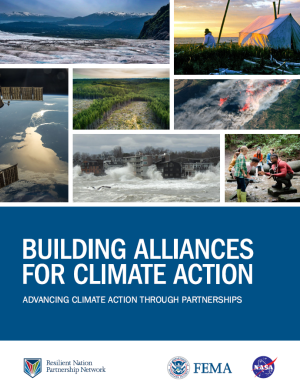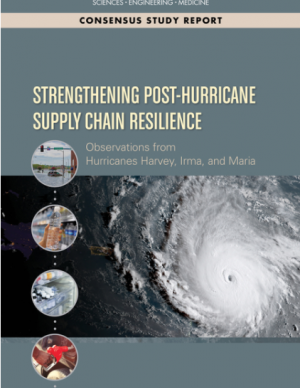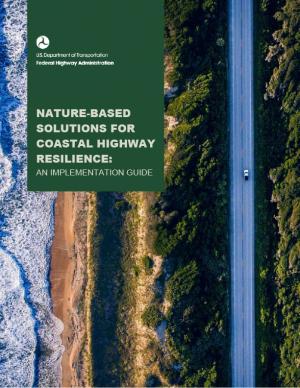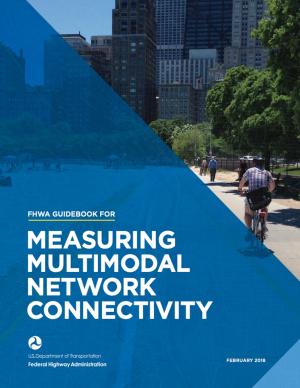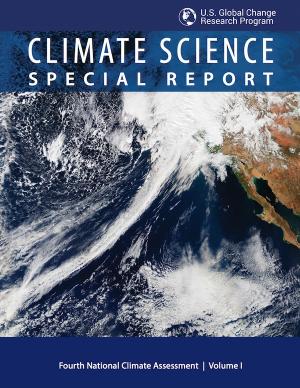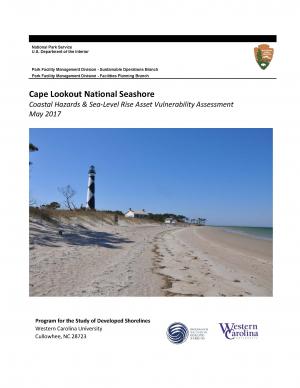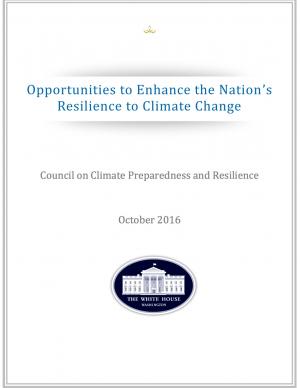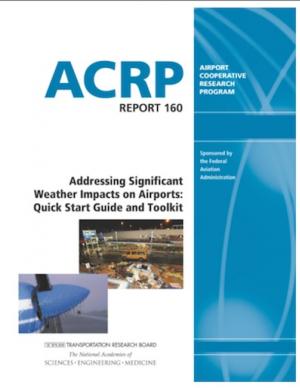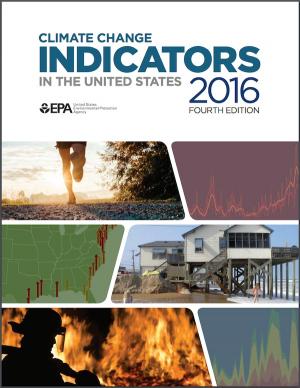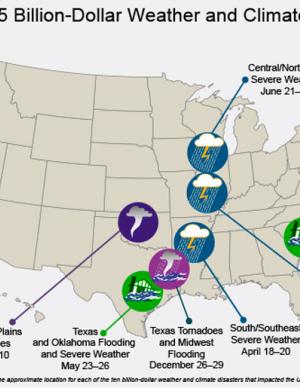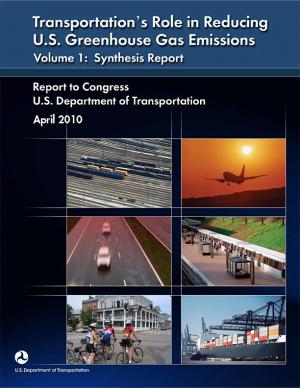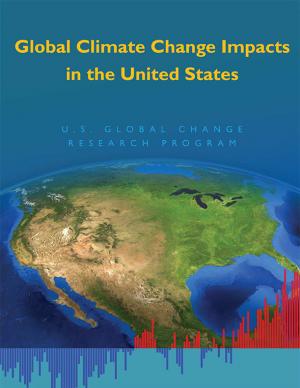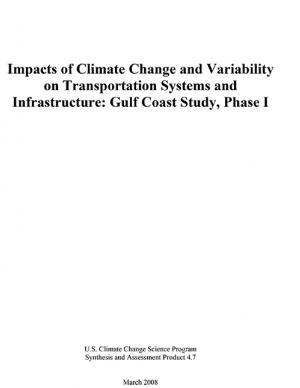Access a range of climate-related reports issued by government agencies and scientific organizations. Browse the reports listed below, or filter by scope, content, or focus in the boxes above. To expand your results, click the Clear Filters link.
There have been decades of discriminatory policies, practices, and embedded bias within infrastructure planning processes. It remains unclear which research strategies can ensure that infrastructure investments help increase resilience and improve equitable decision-making—and do not inadvertently impact—vulnerable and disadvantaged communities.
This consensus study report, developed by the National Academies’ Resilient America Program’s Committee on Hazard Mitigation and Resilience Applied Research Topics, identifies three applied research topics as being particularly important for natural hazard mitigation and resilience for Equitable and Resilient Infrastructure Investments:
- partnerships for equitable infrastructure development
- systemic change toward resilient and equitable infrastructure investment
- innovations in finance and financial analysis.
To become climate resilient requires collective action. Our efforts must take a Whole-of-Government and Whole Community approach.
The Resilient Nation Partnership Network is working to address this through partnership. The result of our collective action is this Building Alliances for Climate Action resource. It is the work of many organizations and individuals, including federal representatives, faith leaders, community-based organizations, mayors and many more. At a time when many are searching for direction on how to address the climate crisis, this resource represents a unifying voice, helping guide the Whole Community forward
The world is transforming its energy system from one dominated by fossil fuel combustion to one with net-zero emissions of carbon dioxide (CO2), the primary anthropogenic greenhouse gas. This energy transition is critical to mitigating climate change, protecting human health, and revitalizing the U.S. economy. To help policymakers, businesses, communities, and the public better understand what a net-zero transition would mean for the United States, the National Academies of Sciences, Engineering and Medicine convened a committee of experts to investigate how the U.S. could best decarbonize its transportation, electricity, buildings, and industrial sectors.
This report, Accelerating Decarbonization of the United States Energy System, identifies key technological and socio-economic goals that must be achieved to put the United States on the path to reach net-zero carbon emissions by 2050. The report presents a policy blueprint outlining critical near-term actions for the first decade (2021-2030) of this 30-year effort, including ways to support communities that will be most impacted by the transition.
This report presents recommendations for how state governments can develop climate-resilience financial systems that help local communities invest in protecting residents, businesses, public infrastructure, private property, and natural resources from climate-driven stresses and shocks. To help states consider and act on the recommendations, a State Climate Resilience Action Checklist (page 50) identifies the essential actions that states need to take to build a comprehensive approach to resilience, including a financial system. The report also offers an Inventory of Climate Resilience Actions.
In the third quarter of 2017, Hurricanes Harvey, Irma and Maria revealed some significant vulnerabilities in the national and regional supply chains of Texas, Florida, the U.S. Virgin Islands, and Puerto Rico. Drawing on lessons learned during the 2017 hurricanes, this report explores future strategies to improve supply chain management in disaster situations. It makes recommendations to strengthen the roles of continuity planning, partnerships between civic leaders with small businesses, and infrastructure investment to ensure that essential supply chains will remain operational in the next major disaster. Focusing on the supply chains food, fuel, water, pharmaceutical, and medical supplies, the recommendations of this report will assist FEMA as well as state and local officials, private sector decision makers, civic leaders, and others who can help ensure that supply chains remain robust and resilient in the face of natural disasters.
This report and the accompanying community spotlights provide an overview of climate change science, reasons why action is needed, how science supports decision making and planning, ways to adapt to climate change and limit the severity of its effects, and how such efforts can help build resiliency. The report illustrates the ways in which science can help individuals, communities, businesses, and government agencies make informed decisions. By working together to identify solutions and bring about positive change, we can reduce the risks faced by current and future generations.
This guide is designed to help transportation practitioners understand how and where nature-based and hybrid solutions can be used to improve the resilience of coastal roads and bridges. It summarizes the potential flood-reduction benefits and co-benefits of these strategies, then follows the steps in the project delivery process, providing guidance on considering nature-based solutions in the planning process, conducting site assessments, key engineering and ecological design considerations, permitting approaches, construction considerations, and monitoring and maintenance strategies. The guide also includes appendices with site characterization tools, decision support for selecting nature-based solutions, suggested performance metrics, and links to additional tools and resources.
The Beloved Community is a vision for our future where all people share equally in the wealth and bounty of the earth, where we protect its abundance, diversity, and beauty for future generations. In this vision of liberation, racism, exploitation, and domination are replaced by democracy, cooperation, interdependence, and love. To get there, we pursue transformative, systems-change solutions. What do we mean by this? The root causes of the problems our communities face—like climate change, racism, and economic inequality—are all deeply connected. Since the problems are connected, so are the solutions. The purpose of this toolkit is to put us on the path toward achieving this vision. Through the context of building equity and resilience into climate adaptation planning, we introduce strategies to transform our communities and, by extension, society. Our ultimate goal is to create lasting and systemic change. At the same time, we recognize the urgency of the issues our communities face and the need to take action now. That is why we pursue change at every scale—from policy changes to community-based projects—to institute the transformative change we need to uphold our vision of the beloved community.
The Global Change Research Act of 1990 mandates that the U.S. Global Change Research Program deliver a report to Congress and the President no less than every four years that “1) integrates, evaluates, and interprets the findings of the Program…; 2) analyzes the effects of global change on the natural environment, agriculture, energy production and use, land and water resources, transportation, human health and welfare, human social systems, and biological diversity; and 3) analyzes current trends in global change, both human-induced and natural, and projects major trends for the subsequent 25 to 100 years.” The Fourth National Climate Assessment (NCA4) fulfills that mandate in two volumes. This report, Volume II, draws on the foundational science described in Volume I, the Climate Science Special Report. Volume II focuses on the human welfare, societal, and environmental elements of climate change and variability for 10 regions and 18 national topics, with particular attention paid to observed and projected risks, impacts, consideration of risk reduction, and implications under different mitigation pathways. Where possible, NCA4 Volume II provides examples of actions underway in communities across the United States to reduce the risks associated with climate change, increase resilience, and improve livelihoods. This assessment was written to help inform decision makers, utility and natural resource managers, public health officials, emergency planners, and other stakeholders by providing a thorough examination of the effects of climate change on the United States.
This guidebook outlines five core components of multimodal network connectivity, as listed below, with a focus on pedestrians and bicyclists. While these components are all related, the distinctions between them provide a framework for selecting connectivity measures that address specific questions. Multimodel networks are accessible, interconnected pedestrian and/or bicycle transportation facilities that allow all users to safely and conveniently get where they want to go.
The guidebook describes analysis methods and supporting measures associated with each of these components:
- Network completeness - How much of the transportation network is available to bicyclists and pedestrians?
- Network density - How dense are the available links and nodes of the bicycle and pedestrian network?
- Route directness - How far out of their way do users have to travel to find a facility they can or want to use?
- Access to destinations - What destinations can be reached using the transportation network?
- Network quality - How does the network support users of varying levels of experience, ages, abilities, and comfort with bicycling or walking?
As a key part of the Fourth National Climate Assessment (NCA4), the U.S. Global Change Research Program (USGCRP) oversaw the production of this stand-alone report of the state of science relating to climate change and its physical impacts. The Climate Science Special Report (CSSR) is designed to be an authoritative assessment of the science of climate change, with a focus on the United States, to serve as the foundation for efforts to assess climate-related risks and inform decision making about responses.
As Volume 1 of NCA4, CSSR serves several purposes, including providing (1) an updated and detailed analysis of the findings of how climate change is affecting weather and climate across the United States; (2) an executive summary and 15 chapters that provide the basis for the discussion of climate science found in the second volume of NCA4; and (3) foundational information and projections for climate change, including extremes, to improve “end-to-end” consistency in sectoral, regional, and resilience analyses within the second volume. CSSR integrates and evaluates the findings on climate science and discusses the uncertainties associated with these findings. It analyzes current trends in climate change, both human-induced and natural, and projects major trends to the end of this century. As an assessment and analysis of the science, CSSR provides important input to the development of other parts of NCA4, and their primary focus on the human welfare, societal, economic and environmental elements of climate change. Much of the underlying report is written at a level more appropriate for a scientific audience, though the Executive Summary is intended to be accessible to a broader audience.
The protocol developed and used in this report is unique in that it is an asset-level assessment of the vulnerability of infrastructure to multiple coastal hazards and climate change factors (e.g., erosion, flooding, storm surge, sea-level rise, and historical flooding) over a 35-year planning horizon (2050). The protocol was applied to all buildings and roads in Cape Lookout National Seashore; the results are summarized in the report.
New U.S. regional sea level scenarios developed by NOAA and its partners will give coastal communities better, more localized data to help them plan for and adapt to the risk of rising sea levels to their economies and infrastructure.
The Office of Management and Budget (OMB), in collaboration with the Council of Economic Advisers (CEA), has attempted to quantify the fiscal risks posed by climate change for the Federal Government. To date, this effort has yielded two primary conclusions: first, that our current understanding of the fiscal risks of climate change is nascent, limited in scope, and subject to significant uncertainty; and second, that the evidence available thus far indicates the fiscal risks to the Federal Government could be very significant over the course of this century without ambitious action to reduce greenhouse gas emissions (GHGs) and adapt our communities to a changing climate.
This report outlines the contours of fiscal risk through five program-specific assessments: crop insurance, health care, wildfire suppression, hurricane-related disaster relief, and Federal facility flood risk. These programs were assessed because they are directly influenced by climate change, they have strong links to the Federal Budget, and quantitative scientific and economic models regarding the likely magnitude of impacts were available. This report also considers potential impacts to Federal revenues.
This report describes key accomplishments and highlights opportunities for federal agencies and stakeholders to work together on a shared climate resilience agenda. The report builds on lessons learned and outlines three major areas where opportunities exist for innovation, economic growth, and collaboration: through application of science-based data and tools, support for community resilience initiatives, and integration of climate resilience into federal agency missions, operations, and culture.
This Web toolkit raises airport operator awareness about vulnerabilities caused by significant weather events. The toolkit helps airports develop more robust contingency and recovery plans, in addition to their airport emergency plans. The toolkit focuses on events that are “rare but plausible”; that is, events that may have happened in the distant past, or in adjacent geographic areas, but are not common event types at the airport itself, and therefore may not be in the forefront of the airport managers’ minds.
This document provides final guidance for federal agencies on how to consider the impacts of their actions on global climate change in their National Environmental Policy Act (NEPA) reviews, providing a framework for agencies to consider both the effects of a proposed action on climate change, as indicated by its estimated greenhouse gas emissions, and the effects of climate change on a proposed action. The memorandum applies to all types of proposed federal agency actions that are subject to NEPA analysis and guides agencies on how to address the greenhouse gas emissions from federal actions and the effects of climate change on their proposed actions within the existing NEPA regulatory framework.
This report features observed trend data on 37 climate indicators, including U.S and global temperatures, ocean acidity, sea level, river flooding, droughts, and wildfires. It documents rising temperatures, shifting patterns of snow and rainfall, and increasing numbers of extreme climate events, such as heavy rainstorms and record high temperatures. Many of these observed changes are linked to the rising levels of carbon dioxide and other greenhouse gases in our atmosphere, caused by human activities.
President Obama issued this Memorandum and Action Plan on building long-term drought resilience under his Climate Action Plan. The document elucidates the role of the National Drought Resilience Partnership, a team of federal agencies, in helping communities manage the impact of drought by linking information—such as forecasts and early warnings—with drought preparedness strategies in critical sectors like agriculture, municipal water systems, tourism, and transportation.
The National Centers for Environmental Information (NCEI) is the nation's scorekeeper in terms of addressing severe weather and climate events in their historical perspective. As part of its responsibility of monitoring and assessing the climate, NCEI tracks and evaluates climate events in the U.S. and globally that have great economic and societal impacts. Found on these webpages are information on the weather and climate events that have had the greatest economic impact from 1980 to 2015. The U.S. has sustained 188 weather and climate disasters since 1980 where overall damages/costs reached or exceeded $1 billion (including CPI adjustment to 2015). The total cost of these 188 events exceeds $1 trillion.
This guide provides a framework for the selection of appropriate storm damage risk reduction treatments for low-volume roads. There are important tasks and processes that are necessary to make informed treatment selections that this guide does not cover in detail, but should be included in comprehensive road management programs. These tasks include road condition inventories, hazard assessments, and strategic plans for treating high-hazard sites. Specific “stormproofing” measures discussed in this guide include timely road maintenance, many key road drainage measures, culvert diversion prevention, pulling back marginal fill slopes, use of biotechnical and vegetative slope stabilization and erosion control, gully prevention, bridge maintenance, and many other measures.
A 24-year tradition encompassing the work of 425 authors from 57 countries, 2013's State of the Climate report uses dozens of climate indicators to track patterns, changes, and trends of the global climate system.
The National Climate Assessment assesses the science of climate change and its impacts across the United States, now and throughout this century. It documents climate change-related impacts and responses for various sectors and regions, with the goal of better informing public and private decision making at all levels.
The assessment draws from a large body of scientific peer-reviewed research, technical input reports, and other publicly available sources; all sources meet the standards of the Information Quality Act. The report was extensively reviewed by the public and experts, including a panel of the National Academy of Sciences, the 13 federal agencies of the U.S. Global Change Research Program, and the Federal Committee on Environment, Natural Resources, and Sustainability.
President Obama's Climate Action Plan includes a series of executive actions to reduce carbon pollution, prepare the United States for the impacts of climate change, and lead international efforts to address global climate change.
This Technical Input to the Third National Climate Assessment examines vulnerabilities of infrastructures and urban systems to extreme weather and other events associated with climate change.
This report, submitted to the U.S. Congress in April 2010, evaluates a range of strategies for reducing greenhouse gases from transportation, including introducing low-carbon fuels, increasing vehicle fuel economy, improving transportation system efficiency, aligning transportation planning and investments to achieve GHG reduction objectives, and pricing.
This report is the Second National Climate Assessment, summarizing the science and impacts of climate change on the United States. The report discusses climate-related impacts for various societal and environmental sectors and regions across the nation. It is an authoritative scientific report written in plain language, with the goal of better informing public and private decision making at all levels.
As global temperatures increase, sea levels rise, and weather patterns change, the stewards of our nation's infrastructure are challenged to consider how these changes may affect the country's roads, airports, rail, transit systems, and ports. This study focuses on potential impacts of climate change on human infrastructure in the U.S. Gulf Coast region.


